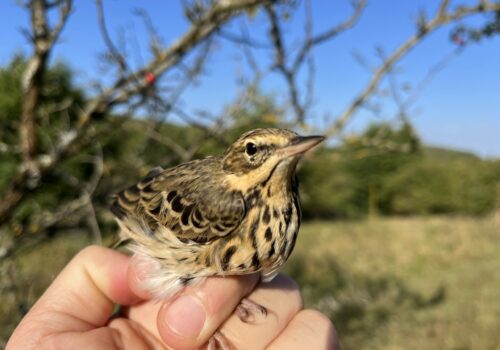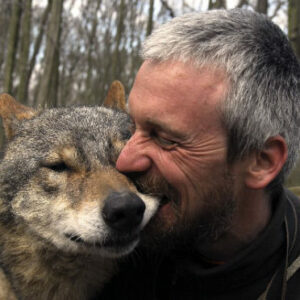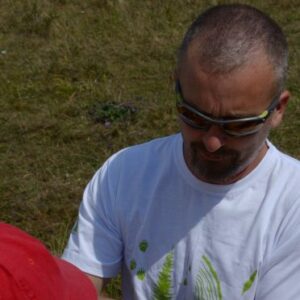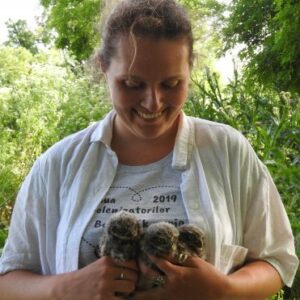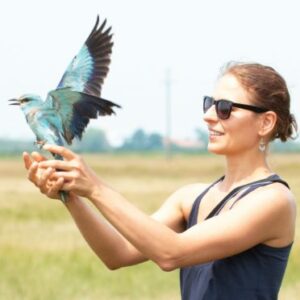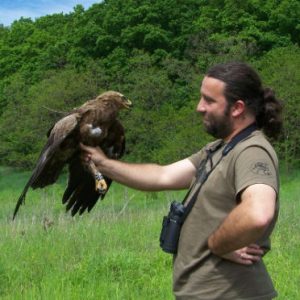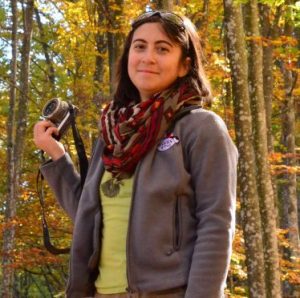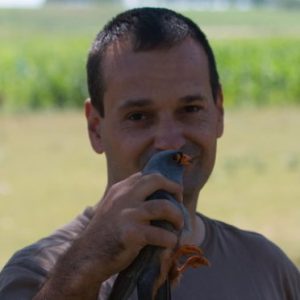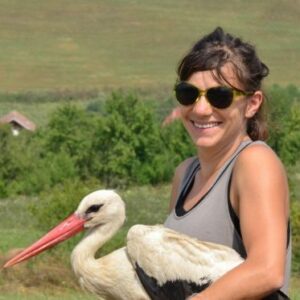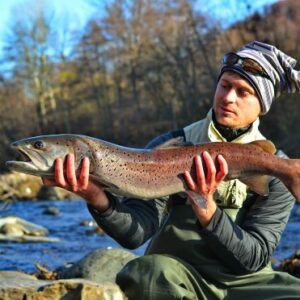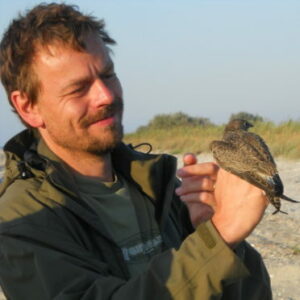This year we celebrated the tenth consecutive autumn ringing in Chituc Spit by breaking every previously set record! 2023, much like 2014 and 2019, was marked by a strong influx of blue tits (Cyanistes caeruleus). These huge flocks of blue tits most likely gather from all parts of Eastern Europe to winter in the reed beds of the Danube Delta. Due to this influx, all our previous ringing records have been broken:
- Most birds ringed in one day: 1106, significantly more than the previous record of 876 birds set on 20 October 2019.
- On the best week this year we marked 4376 birds; the previous weekly record was 4231 birds.
- Per total, we marked 22848 birds this year at the ringing camp, 15% more than the previous record, set in 2019.
The average number of birds ringed in previous years predicts to some extent how many birds we can expect in the same period in the following year (Fig. 1). In addition to the already mentioned blue tit, we marked significantly more bearded reedlings (Panurus biarmicus), reed buntings (Emberiza schoeniclus) and goldcrests (Regulus regulus). In contrast, we ringed fewer song thrushes (Turdus philomelos), willow warblers (Phylloscopus trochilus), red-backed shrikes (Lanius collurio) and redstarts (Phoenicurus phoenicurus).
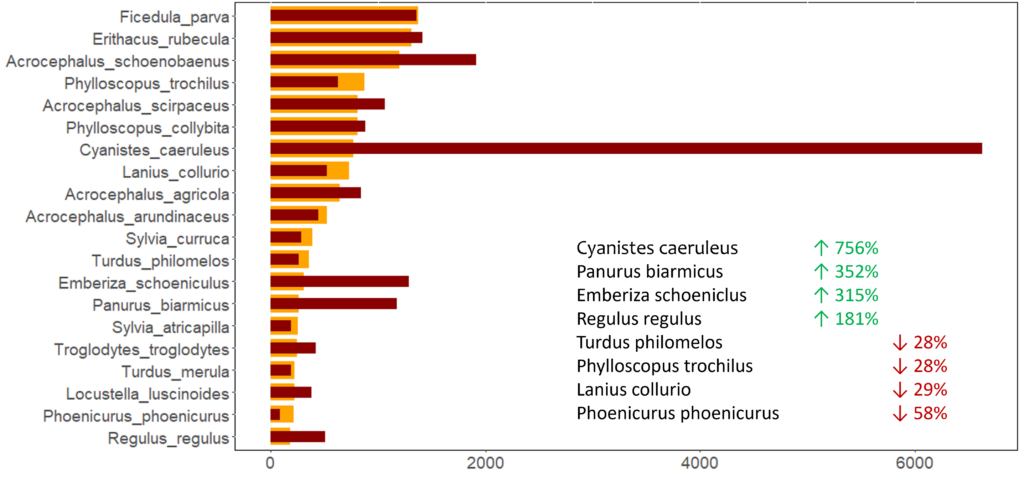
Long-term trends
The standardised collection of medium and long-term data allows for the analysis of very slow ecological processes. With each new year added to the data series built up over the last 10 years, we get a clearer picture of population change and changes in the migration periods of individual species. Thus, analysis of the data collected so far indicates that some of the more common species have become more abundant or less abundant over the years (Fig. 2.). For example, we can see that on a yearly basis, we have ringed more and more chiffchaffs (Phylloscopus collybita, R2 = 0.52) and less and less kingfishers (Alcedo atthis, R2 = 0.53) and red-backed shrikes (Lanius collurio, R2 = 0.48). The R2 value is a coefficient which indicates how well the points (i.e., the number of individuals ringed per year) fit the trendline marked in blue. The closer the R2 value is to 1, the more accurate the trend indicated by the blue line. Most species have a very low R2 value, which may indicate a large fluctuation in the number of individuals marked per year. For these species, ten years of ringing and such a simplistic statistical analysis are simply not sufficient to identify positive, negative, or neutral trends.
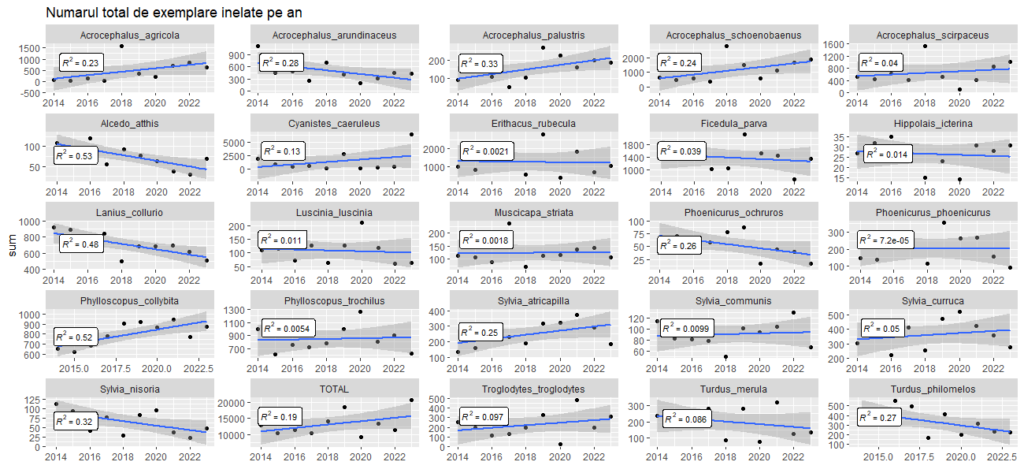
Rare species caught in 2023
In 2023 we ringed birds belonging to 110 unique species and, as reported previously, this year was also a great year for rarities (Fig. 3.). Some of the rare species, such as the North American ovenbird (Seiurus aurocapillus), are accidentally lost and have slim chances of survival. However, rare species can pioneer new migration routes: the red-flanked bluetail (Tarsiger cyanurus) is rarely seen in Romania, but with the north-western expansion of its breeding range, it is likely to become more common during migration. Other rare species worth mentioning include Radde’s warbler (Phylloscopus schwarzi, first sighting in Romania), Hume’s warbler (Phylloscopus humei), dusky warbler (Phylloscopus fuscatus), pine bunting (Emberiza leucocephala), little bunting (Emberiza pusilla) and Eastern stonechat (Saxicola maura).

Volunteers and sponsors The ringing activity requires ongoing funding: ring stocks need to be replenished regularly, damaged bird nets need to be replaced, and camp equipment need frequent repairs. Fortunately, as in previous years, a significant part of the running costs has been covered by our friends and supporters. This year, a significant number of nets were damaged by wild horses, therefore, we launched a fundraising campaign on the Galantom platform. 50 people supported the camp with a total of 8500 lei, which will be used to buy new nets. This year’s work at the ringing camp was undertaken by 180 volunteers, without whom the camp would simply not exist. Our activities were supported financially and logistically by Jenica and Cornel Cotorogea, Lajos Pál and S.C. Softech S.R.L., to whom we owe our gratitude. We thank the Danube Delta Biosphere Reserve Administration for their excellent cooperation over the past decade and hope to continue to be their partners in the future.

